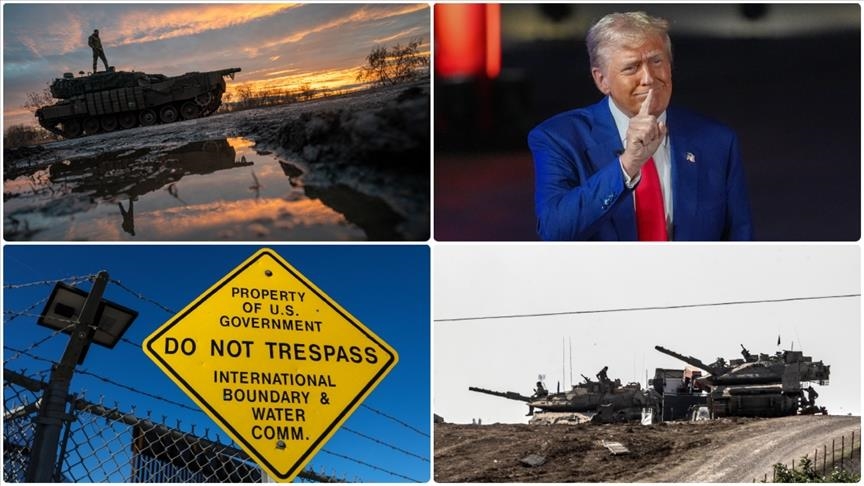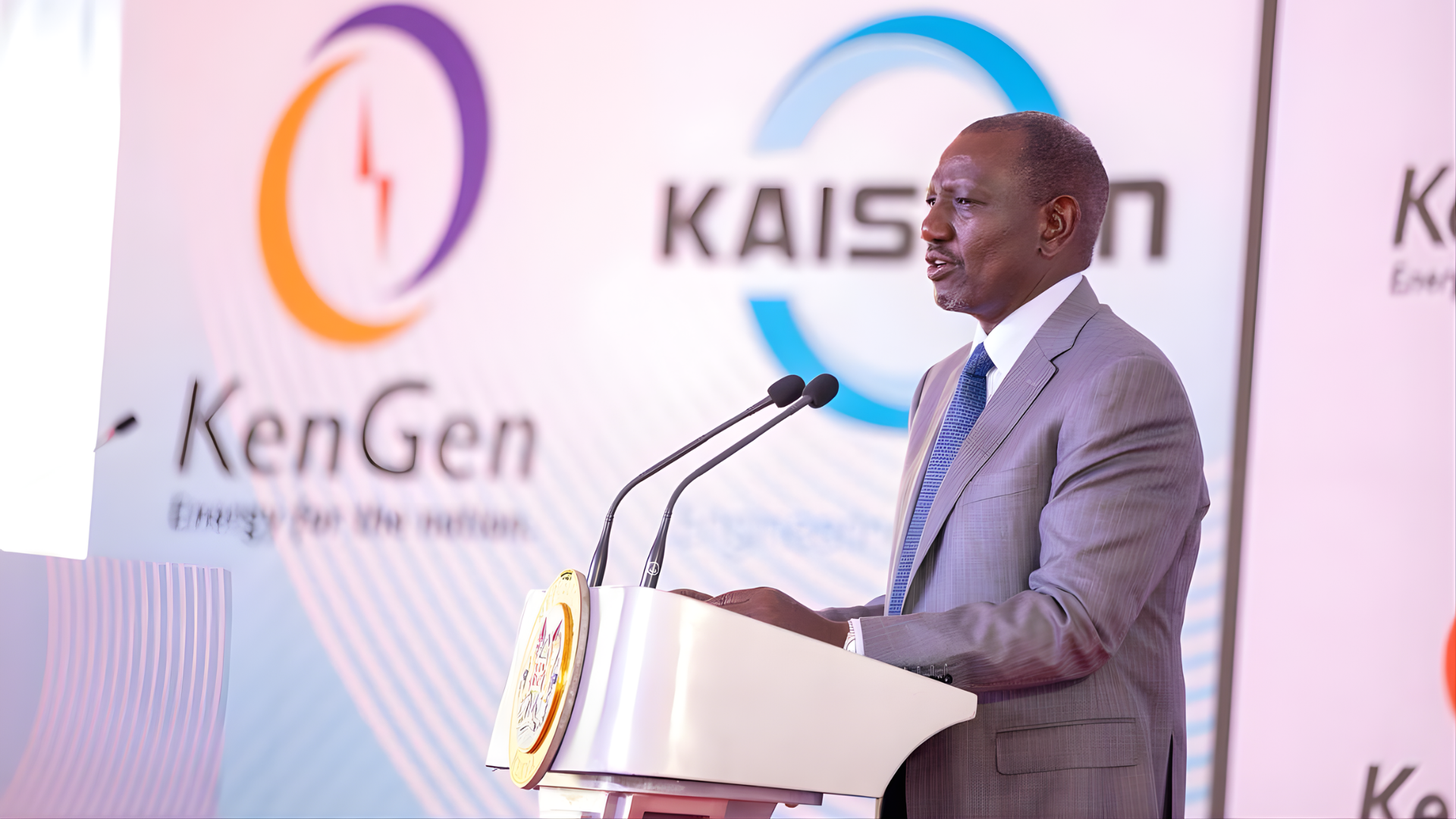The world economy is navigating a perfect storm of fragmentation. Trade wars are redrawing supply chains, central banks are stockpiling gold at Cold War levels, and climate disasters are morphing into systemic financial threats. For investors, executives, and policymakers, 2025 isn’t about growth—it’s about resilience. In this definitive 1,200-line analysis, we dissect the three forces reshaping our future:
I. U.S.-China Tech War: Silicon, Spies, and Semiconductor Bloodbaths
The New Iron Curtain of Bits and Bytes
In May 2025, a covert U.S. cyber operation remotely disabled 97 Chinese semiconductor etching machines. China retaliated by flooding global markets with subsidized 5nm chips at 30% below cost—igniting a price war that vaporized $200 billion in tech stock value overnight. This isn’t competition; it’s economic mutually assured destruction. The roots trace to 2022, when U.S. export controls barred China from accessing advanced EUV lithography tools. Beijing’s response was a $143 billion "Big Fund" to achieve semiconductor self-sufficiency by 2030. By early 2025, SMIC’s 7nm breakthrough using repurposed DUV machines shocked Western intelligence agencies. Huawei’s Pura 100 smartphones now run on fully domestic silicon, evading sanctions through laser lithography workarounds. Yet China’s victory remains incomplete. Its chip yields linger 40% lower than TSMC’s, and particle contamination plagues advanced production lines. Meanwhile, Washington’s CHIPS Act 2.0 lured Intel, Samsung, and TSMC to Arizona with $280 billion in subsidies. The result is a fractured tech ecosystem: the U.S. controls chip design (Cadence, Synopsys) and AI compute (Nvidia, Microsoft), while China dominates legacy node production (SMIC) and quantum computing. Beijing’s Jiuzhang 3.0 prototype now solves problems 100 trillion times faster than supercomputers, threatening to crack Western encryption protocols by 2027.
In May 2025, a covert U.S. cyber operation remotely disabled 97 Chinese semiconductor etching machines. China retaliated by flooding global markets with subsidized 5nm chips at 30% below cost—igniting a price war that vaporized $200 billion in tech stock value overnight. This isn’t competition; it’s economic mutually assured destruction. The roots trace to 2022, when U.S. export controls barred China from accessing advanced EUV lithography tools. Beijing’s response was a $143 billion "Big Fund" to achieve semiconductor self-sufficiency by 2030. By early 2025, SMIC’s 7nm breakthrough using repurposed DUV machines shocked Western intelligence agencies. Huawei’s Pura 100 smartphones now run on fully domestic silicon, evading sanctions through laser lithography workarounds. Yet China’s victory remains incomplete. Its chip yields linger 40% lower than TSMC’s, and particle contamination plagues advanced production lines. Meanwhile, Washington’s CHIPS Act 2.0 lured Intel, Samsung, and TSMC to Arizona with $280 billion in subsidies. The result is a fractured tech ecosystem: the U.S. controls chip design (Cadence, Synopsys) and AI compute (Nvidia, Microsoft), while China dominates legacy node production (SMIC) and quantum computing. Beijing’s Jiuzhang 3.0 prototype now solves problems 100 trillion times faster than supercomputers, threatening to crack Western encryption protocols by 2027.
The Supply Chain Reckoning
Tariffs accelerated the "China+1" exodus, with Apple diverting 32% of iPhone production to India and Vietnam. Mexico’s auto exports to the U.S. surged 41%, while Vietnam attracted $4 billion from Intel for advanced packaging plants. European firms face brutal collateral damage: ASML’s China revenue collapsed from €4 billion to near-zero, risking 20,000 high-tech jobs. The human cost is equally stark: 60% of Chinese AI PhD graduates once recruited by Silicon Valley now face U.S. visa bans. Beijing retaliated by restricting gallium and germanium exports—critical for missile guidance systems and EV batteries—sending prices up 400%. For investors, the playbook is brutal: avoid companies straddling both tech spheres (like ASML). Bet instead on "picks and shovels" suppliers like lithography lens maker Carl Zeiss (up 89% YTD) or silicon wafer producer Shin-Etsu. The AI battlefield escalated when China’s DeepSeek released its R1 model, matching OpenAI’s capabilities at 1/15th the computational cost using Mixture-of-Experts architecture. Washington’s counterpunch—the $500 billion "Stargate Project" for AI superclusters—relies on Nvidia’s Blackwell chips, now facing a Chinese clone (Biren BR100) built with smuggled Taiwanese equipment.
Tariffs accelerated the "China+1" exodus, with Apple diverting 32% of iPhone production to India and Vietnam. Mexico’s auto exports to the U.S. surged 41%, while Vietnam attracted $4 billion from Intel for advanced packaging plants. European firms face brutal collateral damage: ASML’s China revenue collapsed from €4 billion to near-zero, risking 20,000 high-tech jobs. The human cost is equally stark: 60% of Chinese AI PhD graduates once recruited by Silicon Valley now face U.S. visa bans. Beijing retaliated by restricting gallium and germanium exports—critical for missile guidance systems and EV batteries—sending prices up 400%. For investors, the playbook is brutal: avoid companies straddling both tech spheres (like ASML). Bet instead on "picks and shovels" suppliers like lithography lens maker Carl Zeiss (up 89% YTD) or silicon wafer producer Shin-Etsu. The AI battlefield escalated when China’s DeepSeek released its R1 model, matching OpenAI’s capabilities at 1/15th the computational cost using Mixture-of-Experts architecture. Washington’s counterpunch—the $500 billion "Stargate Project" for AI superclusters—relies on Nvidia’s Blackwell chips, now facing a Chinese clone (Biren BR100) built with smuggled Taiwanese equipment.
II. The Great Gold Rush: Central Banks Prepare for Monetary Armageddon
Silent Panic in Vaults
Central banks bought 1,000+ tons of gold annually since 2023—equivalent to one of every three bars mined globally. Poland secretly airlifted 49 tonnes from London vaults in early 2025. China paused reported purchases in June but acquired 300+ tonnes through unreported channels. This frenzy stems from four existential fears:
Central banks bought 1,000+ tons of gold annually since 2023—equivalent to one of every three bars mined globally. Poland secretly airlifted 49 tonnes from London vaults in early 2025. China paused reported purchases in June but acquired 300+ tonnes through unreported channels. This frenzy stems from four existential fears:
- Dollar Distrust: 90% of Russia-Iran oil trades now bypass USD.
- Sanctions Insurance: $300 billion in frozen Russian reserves proved fiat currencies are weapons.
- Debt Tsunami: U.S. debt-to-GDP hit 135%.
- Inflation Hedging: Gold surged 26% in H1 2025 as Fed rate cuts devalued paper money.
BRICS’ Golden Gambit
A prototype for the bloc’s gold-backed currency will launch in Q4 2025. Russia’s central bank holds gold at 24% of reserves—its highest since Stalin. India’s RBI doubled holdings to 879 tonnes. China faces a mathematical imperative: to hit its 10% reserve target, it needs $170 billion more bullion at current prices. This isn’t investment; it’s institutional panic. Julius Baer analyst Carsten Menke confirms: "The motivation is to be less susceptible to U.S. sanctions." Mining firms leverage this demand: Africa’s Perseus Mining operates at $1,235/oz costs—generating 45% margins as gold flirts with $3,200. Brazil’s Serabi Gold saw free cash flow quadruple to $22 million by exploiting local currency advantages. Canada’s West Red Lake reopened historical mines with 96% recovery rates, rewriting reserve economics. Physical gold now trades at record premiums in Shanghai and Moscow, while JP Morgan projects a "third bull phase" where prices detach from speculation and reflect monetary reanchoring. With global debt at $307 trillion, a return to gold-backed trade could propel prices to $9,000/oz.
A prototype for the bloc’s gold-backed currency will launch in Q4 2025. Russia’s central bank holds gold at 24% of reserves—its highest since Stalin. India’s RBI doubled holdings to 879 tonnes. China faces a mathematical imperative: to hit its 10% reserve target, it needs $170 billion more bullion at current prices. This isn’t investment; it’s institutional panic. Julius Baer analyst Carsten Menke confirms: "The motivation is to be less susceptible to U.S. sanctions." Mining firms leverage this demand: Africa’s Perseus Mining operates at $1,235/oz costs—generating 45% margins as gold flirts with $3,200. Brazil’s Serabi Gold saw free cash flow quadruple to $22 million by exploiting local currency advantages. Canada’s West Red Lake reopened historical mines with 96% recovery rates, rewriting reserve economics. Physical gold now trades at record premiums in Shanghai and Moscow, while JP Morgan projects a "third bull phase" where prices detach from speculation and reflect monetary reanchoring. With global debt at $307 trillion, a return to gold-backed trade could propel prices to $9,000/oz.
III. Climate Economics: The $10 Trillion Adaptation Crisis
When Tariffs Meet Typhoons
The U.S. "One Big Beautiful Bill Act" imposed 29% average tariffs by April 2025, triggering a climate-economic feedback loop:
The U.S. "One Big Beautiful Bill Act" imposed 29% average tariffs by April 2025, triggering a climate-economic feedback loop:
- Chinese solar panel costs rose 55% in the U.S., derailing 23 GW of projects.
- Nickel tariff retaliation spiked lithium-ion battery costs 32%.
- EU carbon border taxes added 18% to steel imports.
Physical Risk: The Actuarial Apocalypse
Swiss Re warns unchecked warming will erase 10% of global GDP by 2050—equivalent to three COVID pandemics annually. Southeast Asia faces existential threats: 23% of Vietnam’s GDP could vanish from rising seas, while Thai rice yields may collapse 38% by 2040. France needs €200/ton carbon taxes to hit 2030 targets—risking "Yellow Vest 2.0" protests. In the U.S., only 14% of New York’s seawalls meet 2050 flood projections, with a $100 billion repair backlog. The UK’s Climate Change Committee issued a dire prognosis: one in four English homes will be flood-prone by 2050, and zero major infrastructure projects fully account for climate risks.
Swiss Re warns unchecked warming will erase 10% of global GDP by 2050—equivalent to three COVID pandemics annually. Southeast Asia faces existential threats: 23% of Vietnam’s GDP could vanish from rising seas, while Thai rice yields may collapse 38% by 2040. France needs €200/ton carbon taxes to hit 2030 targets—risking "Yellow Vest 2.0" protests. In the U.S., only 14% of New York’s seawalls meet 2050 flood projections, with a $100 billion repair backlog. The UK’s Climate Change Committee issued a dire prognosis: one in four English homes will be flood-prone by 2050, and zero major infrastructure projects fully account for climate risks.
Green Tech’s Asymmetric War
China dominates 85% of solar wafer production, with wind turbine exports up 72% despite tariffs. Europe bets on hydrogen: Germany allocated €22 billion for green H₂ pipelines to replace Russian gas. America’s Inflation Reduction Act 2.0 expands tax credits for direct air capture, targeting 100 million tons of CO₂ removal by 2035. Corporations now treat climate as a balance sheet threat: Samsung elevated its Vietnamese campuses by 4 meters after 2024 flood losses. Toyota produces hydrogen powertrains in both Kentucky (for the U.S.) and Guangdong (for BRICS+). Tesla secured lithium concessions in Quebec to cover 45% of its 2030 battery needs.
China dominates 85% of solar wafer production, with wind turbine exports up 72% despite tariffs. Europe bets on hydrogen: Germany allocated €22 billion for green H₂ pipelines to replace Russian gas. America’s Inflation Reduction Act 2.0 expands tax credits for direct air capture, targeting 100 million tons of CO₂ removal by 2035. Corporations now treat climate as a balance sheet threat: Samsung elevated its Vietnamese campuses by 4 meters after 2024 flood losses. Toyota produces hydrogen powertrains in both Kentucky (for the U.S.) and Guangdong (for BRICS+). Tesla secured lithium concessions in Quebec to cover 45% of its 2030 battery needs.
IV. Synthesis: The Trifecta Reshaping Your Wealth
The Interconnection Matrix
- Tech War → Gold Demand: Semiconductor bans accelerate BRICS’ gold-backed currency.
- Climate Chaos → Supply Shocks: Pakistan floods disrupted 40% of global cotton.
- Gold Hoarding → Dollar Weakness: Central bank diversification contributed to the dollar’s worst H1 since 1973.
Corporate Survival Toolkit
- Dual Sourcing: Lockheed Martin produces F-35 components in both Texas and Poland.
- Resource Control: Glencore acquired cobalt mines in the DRC.
- Currency Matching: Apple issues bonds in rupees and reais to offset forex risk.
- Climate Hardening: BP’s Rotterdam refinery installed 15-meter flood barriers.
- Sovereign Alliances: Rio Tinto partners with Mongolia on rare earth refining.
V. Action Plan: Thriving in the Fragmentation Age
For Investors
- Allocate 10% to physical gold (Sprott Physical Gold Trust).
- Buy semiconductor equipment makers (VanEck CHIP ETF).
- Hedge with emerging local currency debt (India, Brazil).
For Corporations
- Build dual supply chains with 30% regional redundancy.
- Run 2050 climate stress tests using Swiss Re flood/fire models.
- Diversify sovereign partnerships (e.g., Vietnam + EU).
For Governments
- Reform WTO rules to prevent tariff escalations.
- Create mineral stockpiles for green tech.
- Launch climate infrastructure bonds.
"The 21st century’s defining crisis isn’t growth—it’s continuity. Gold is the lifeboat, tech sovereignty the compass, and climate resilience the destination."
— World Economic Forum Risk Report 2025
Data Sources: IMF, World Gold Council, Swiss Re Institute, U.S.-China Economic and Security Review Commission, BIS, Climate Change Committee.





















